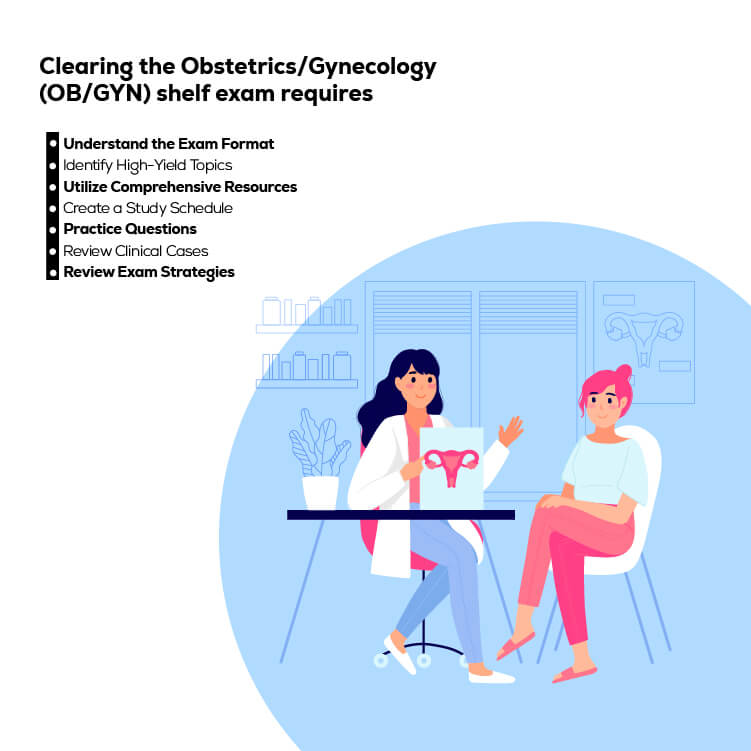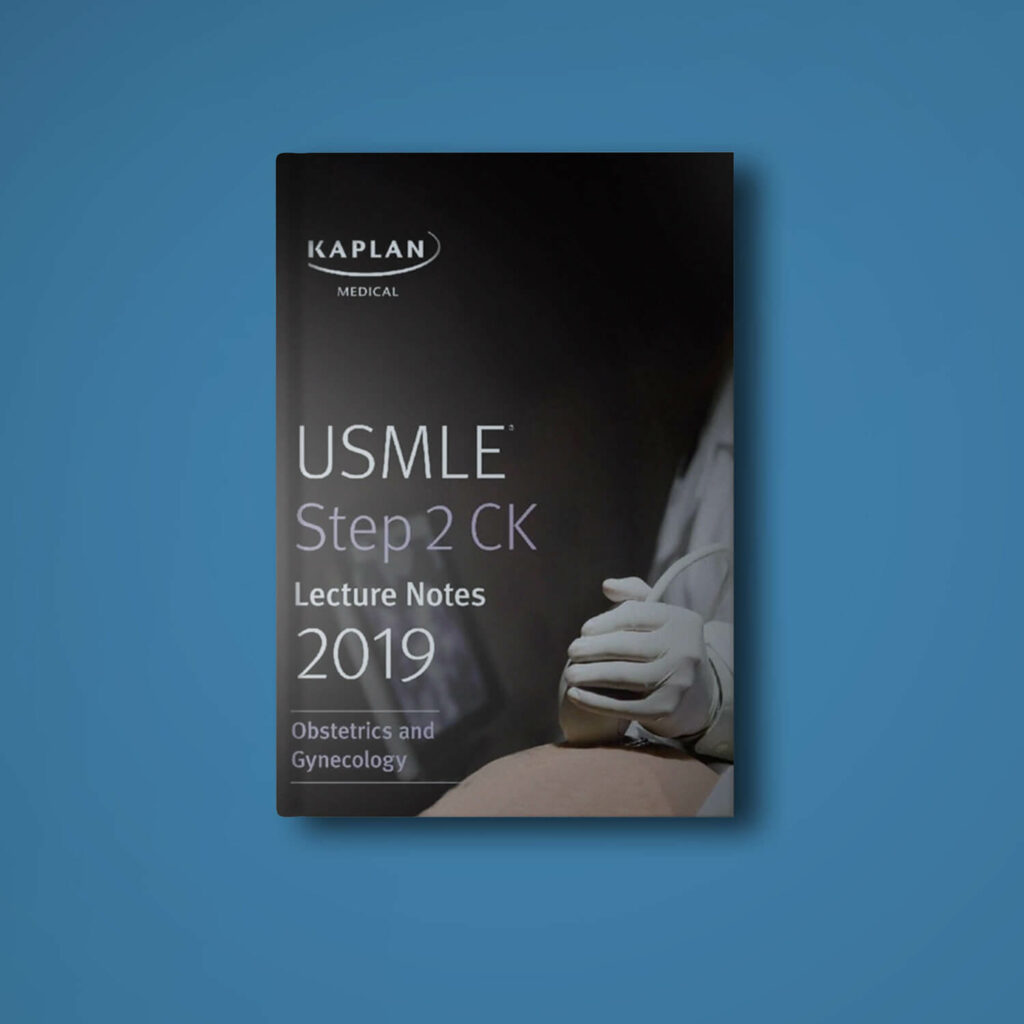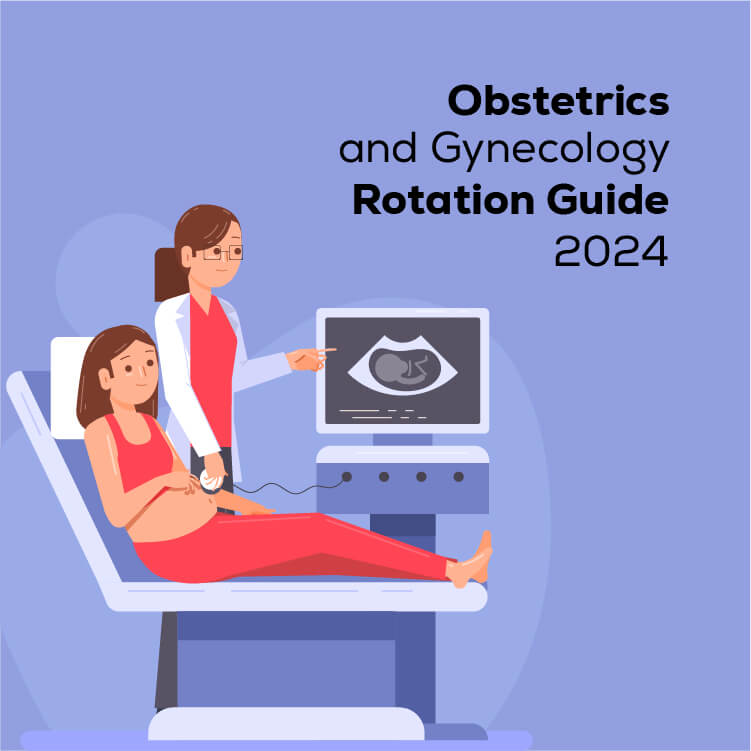
Whether you’re a medical student gearing up for your OB/GYN clerkship or a nursing student preparing for your rotation, this comprehensive guide aims to provide you with valuable insights, resources, and tips to make the most out of your obstetrics and gynecology clerkship.
What is Obstetrics and Gynecology Rotation?
During an obstetrics and gynecology rotation, medical and nursing students prepare themselves in matters related to the specialized fields of obstetrics and gynecology. Overall, they gain a deep understanding of women’s health throughout all stages of life. This clinical rotation provides a multifaceted learning experience, covering prenatal care, labor and delivery, gynecological examinations, surgical procedures, and more. Under the guidance of attending physicians, residents, and other healthcare professionals, students have the opportunity to actively participate in patient care, from conducting prenatal visits to assisting in surgeries. They learn to navigate the complexities of pregnancy, childbirth, and reproductive health, honing their clinical skills and developing a compassionate approach to patient care. Through hands-on experiences and exposure to a diverse patient population, they gain insights into the diagnosis and treatment of obstetric and gynecological conditions.
Difference Between Obstetrics and Gynecology
Many physicians specialize in both obstetrics and gynecology, and they are often referred to as OB/GYNs. However, obstetrics and gynecology are two different fields. The table below highlights the differences between the two fields.
| Aspect | Obstetrics | Gynecology |
| Focus | Care of pregnant women before, during, and after childbirth | Study and treatment of disorders of the female reproductive system |
| Scope | Primarily deals with pregnancy and childbirth | Focuses on gynecological conditions and diseases |
| Patient Population | Pregnant women, fetuses, and newborns | Women of all ages, including those not pregnant |
| Key Procedures | Prenatal care, labor and delivery, postpartum care | Gynecological examinations, Pap smears, breast exams |
| Surgical Focus | Obstetric surgeries such as cesarean sections | Gynecological surgeries like hysterectomies, ovarian cystectomies |
| Subspecialties | Maternal-fetal medicine, reproductive endocrinology | Gynecologic oncology, urogynecology, reproductive endocrinology |
| Timeline of Care | Begins before conception and continues through childbirth | Focuses on ongoing reproductive health throughout a woman’s life |
| Preventive Measures | Prenatal screening tests, vaccination during pregnancy | Screening for gynecological cancers, contraceptive counseling |
| Common Conditions | Pregnancy-related complications, childbirth injuries | Menstrual disorders, infertility, gynecological cancers |
| Collaborative Care | Works closely with neonatologists, pediatricians, and midwives | Collaborates with other specialists such as oncologists, endocrinologists |
When to Apply for an Obstetrics & Gynecology Clerkship

To ensure a smooth and successful experience, it’s crucial to apply for an Obstetrics & Gynecology (OB/GYN) clerkship well in advance. Typically, students should start planning and applying for their OB/GYN clerkship about 4 to 6 months before their desired rotation period. However, it’s advisable to begin the process even earlier, ideally 6 to 12 months prior, to allow ample time for research, preparation, and potential adjustments to your schedule.
During this early planning phase, students should familiarize themselves with the application requirements and deadlines set by their medical school or nursing program. They should also consider any prerequisites, such as completing core clinical rotations or meeting specific GPA criteria. Throughout the application period, students should maintain open communication with their medical school advisor or clerkship coordinator.
This includes seeking guidance on the application process, tracking the status of their application, and staying informed about available ob-gyn rotation slots. Flexibility is key, as clerkship schedules can be competitive, and students may need to consider alternative dates or locations. Once assigned to an OB/GYN clerkship, you should confirm your placement and begin preparing for the rotation.
This involves reviewing orientation materials provided by their institution, familiarizing themselves with relevant textbooks and clinical guidelines, and reaching out to peers for advice and insights. By approaching the application process proactively and staying organized throughout, students can maximize their chances of securing a valuable and enriching experience in OB/GYN.
What to Expect from Obstetrics and Gynecology Rotation
During your Obstetrics and Gynecology (OB/GYN) rotation, you can expect to broaden your understanding of women’s health and reproductive medicine. Here’s what you can anticipate:
1. Clinical Exposure: You’ll have the opportunity to observe and participate in a wide range of clinical activities, including prenatal care, labor and delivery, gynecological examinations, and surgical procedures.
2. Prenatal Care: You will learn about the various aspects of prenatal care, including conducting initial assessments, monitoring fetal development, and providing counseling to pregnant women. This may involve performing physical examinations, interpreting laboratory tests, and discussing prenatal screening options.
3. Labor and Delivery: Participate in the miracle of childbirth firsthand and gain insight into the stages of labor, pain management techniques, and obstetric interventions. You may have the opportunity to assist during deliveries, including both vaginal births and cesarean sections.
4. Gynecological Examinations: OB/GYN rotation medical students become proficient in performing gynecological examinations, such as pelvic exams, Pap smears, and breast exams. You will also learn how to conduct these exams with sensitivity and professionalism, while also ensuring patient comfort and privacy.
5. Surgical Experience: Depending on the rotation site, you may observe and assist in various gynecological surgeries, such as hysterectomies, ovarian cystectomies, and laparoscopic procedures. You will also gain exposure to surgical techniques, sterile protocols, and perioperative care.
6. Reproductive Health Education: Engage in discussions about family planning, contraception, and sexual health. This may involve counseling patients on contraceptive options, discussing fertility preservation, and addressing sexually transmitted infections.
7. Multidisciplinary Collaboration: You’ll work closely with attending physicians, residents, nurses, and other healthcare professionals to provide comprehensive care to patients. You will also learn the importance of interdisciplinary teamwork in managing complex obstetric and gynecological cases.
8. Professional Development: Throughout your rotation, you’ll have opportunities for self-reflection, feedback, and mentorship. This will help develop essential skills in communication, clinical reasoning, and patient advocacy
How to Prepare for the Obstetrics & Gynecology Clerkship
Preparing for your Obstetrics & Gynecology (OB/GYN) clerkship demands a proactive approach. Begin by familiarizing yourself with the curriculum and objectives outlined by your institution, and understanding the expected clinical competencies and learning outcomes. Strengthen your foundational knowledge in obstetrics and gynecology by revisiting key concepts in anatomy, physiology, and common clinical presentations. Invest in recommended textbooks, review guides, and online resources to supplement your learning and provide comprehensive coverage of essential topics.
Additionally, take advantage of online modules, lectures, and practice questions to reinforce your understanding and prepare for clinical scenarios. Prioritize practicing clinical skills relevant to OB/GYN, such as pelvic exams and fetal heart rate monitoring, through simulated experiences or standardized patient encounters. Consider completing relevant clinical rotations or electives in women’s health to gain exposure to obstetric and gynecological cases before starting your clerkship.
Familiarize yourself with clinical guidelines, protocols, and evidence-based recommendations for prenatal care, contraception, and management of gynecological conditions. You can learn more about it from the American Board of Obstetrics and Gynecology. Cultivate professional behavior, effective communication, and teamwork skills to foster positive interactions with patients, colleagues, and preceptors. This is how to prepare for ob-gyn rotation.
How to Clear the Obstetrics/Gynecology Shelf Exam

Clearing the Obstetrics/Gynecology (OB/GYN) shelf exam requires comprehensive preparation and a strategic approach to mastering the content and format of the exam. Here is your ob/gyn rotation cheat sheet:
Understand the Exam Format: Familiarize yourself with the format of the OB/GYN shelf exam, including the types of questions (e.g., multiple-choice, vignette-based) and the distribution of topics. Understanding the exam structure will help you tailor your study approach accordingly.
Identify High-Yield Topics: Review OB/GYN textbooks, review guides, and online resources to identify high-yield topics that are commonly tested on the shelf exam. Focus on areas such as prenatal care, labor and delivery, gynecological disorders, reproductive endocrinology, and gynecologic oncology.
Utilize Comprehensive Resources: Invest in high-quality study materials, including textbooks, question banks, and review guides specifically designed for the OB/GYN shelf exam. Choose OB/GYN clerkship resources that provide thorough coverage of core concepts and offer practice questions to reinforce your understanding. Make sure to choose the best books for obstetrics and gynecology rotation.

Create a Study Schedule: Develop a structured study schedule that allocates dedicated time for reviewing each topic area. Break down your study sessions into manageable segments and set realistic goals for completing each topic review and practice question.
Practice Questions: Incorporate practice questions into your study routine to assess your knowledge, identify areas of weakness, and familiarize yourself with the exam format. Use question banks and practice exams to simulate the testing environment and track your progress over time.
Review Clinical Cases: Familiarize yourself with common clinical presentations and patient scenarios encountered in obstetrics and gynecology. Reviewing clinical cases will help you apply theoretical knowledge to real-life situations and improve your clinical reasoning skills.
Review Exam Strategies: Familiarize yourself with effective test-taking strategies, such as process of elimination, time management, and prioritizing questions based on difficulty. Practice these strategies during your study sessions and apply them on practice exams to improve your efficiency and accuracy.
FAQs – Obstetrics & Gynecology Rotation
Away rotations can provide valuable learning experiences and networking opportunities, but they are only sometimes necessary. Consider your career goals and talk to your advisor or mentor to determine if an away rotation is right for you
While away rotations can be beneficial for some specialties, their importance may vary depending on the field and individual circumstances. Consult with your medical school or residency program for guidance.
Many physicians choose to specialize in both obstetrics and gynecology to provide comprehensive care for women throughout their reproductive health journey. OB/GYNs are equipped to address a wide range of issues, from pregnancy and childbirth to gynecological concerns.
The goals of an OB/GYN rotation typically include gaining proficiency in conducting gynecological examinations, understanding prenatal care and childbirth, developing surgical skills, and providing compassionate patient-centered care.
OB/GYNs can earn competitive salaries, with the highest-paid professionals often working in specialized areas such as reproductive endocrinology or maternal-fetal medicine.
Conclusion
Your obstetrics and gynecology rotation is an exciting opportunity to immerse yourself in the diverse and rewarding field of women’s health. By utilizing resources like OB/GYN clerkship guides, review materials, and practice questions, you can prepare effectively for your rotation and maximize your learning experience. Remember to stay curious, ask questions, and embrace every opportunity to grow as a future healthcare provider. Good luck on your OB/GYN journey!



